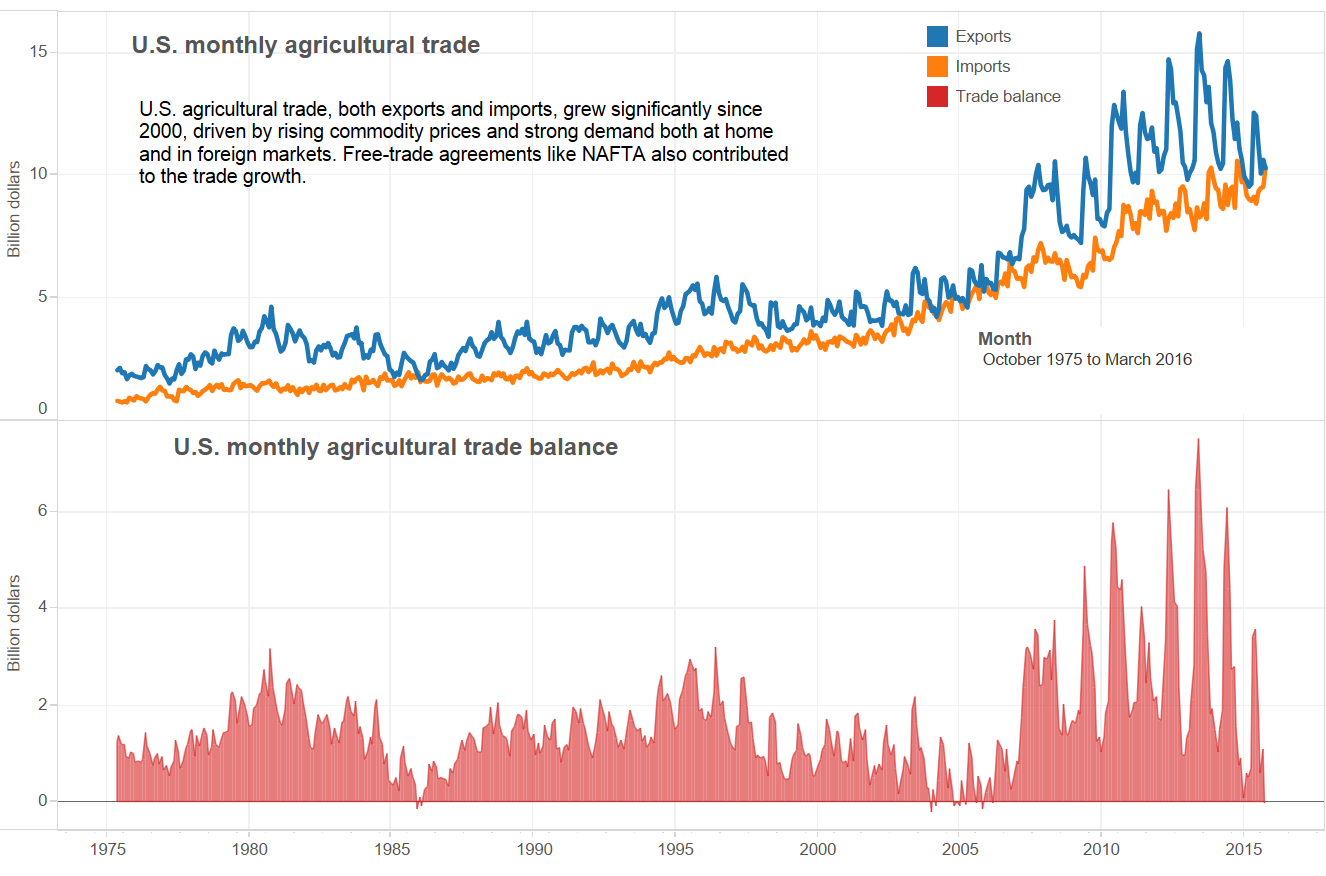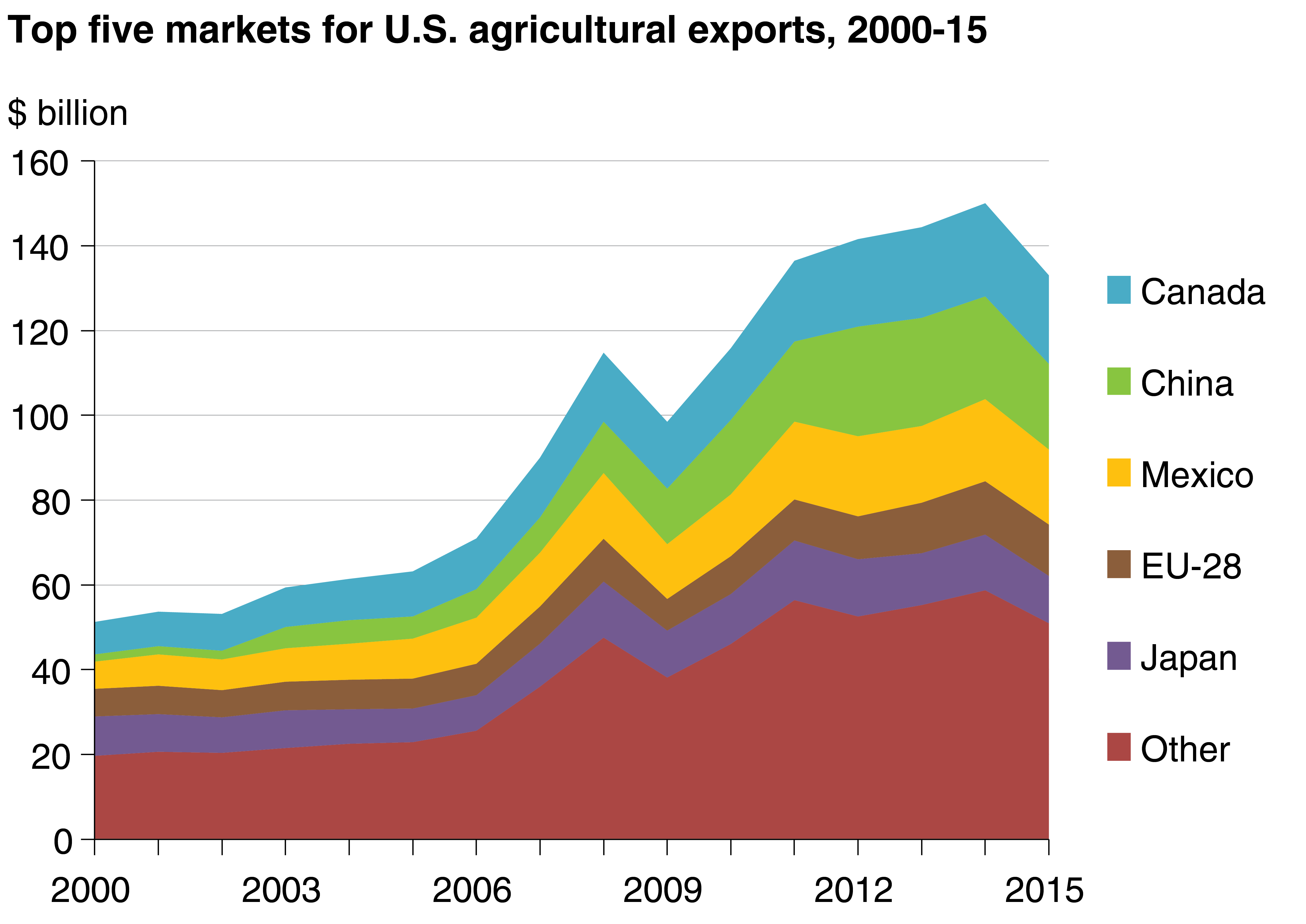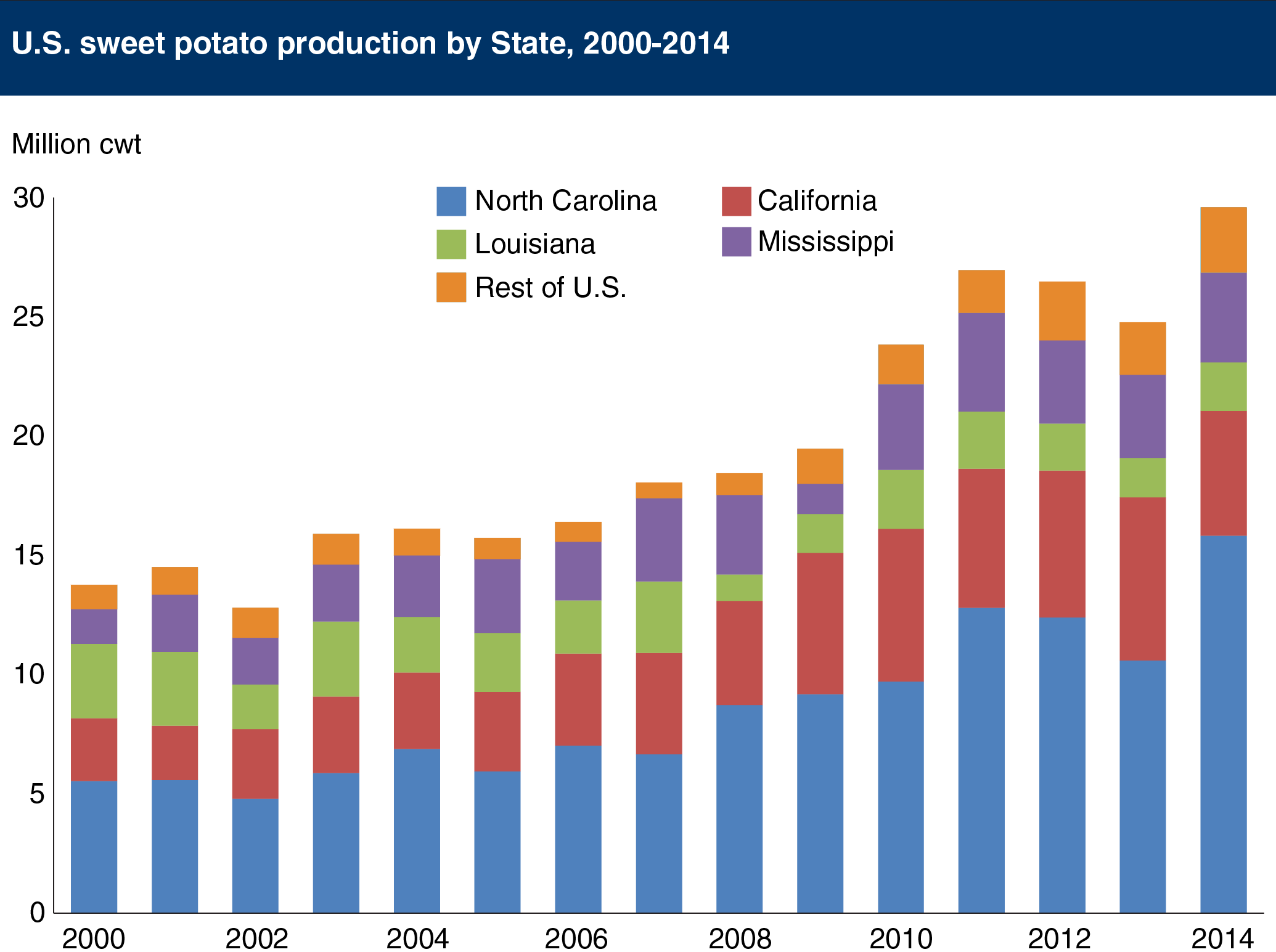Last week we discussed a couple of reasons some farmers choose to sell their farm products locally at farmers markets, roadside stands, and pick-your-own sites. While selling locally is an important market for some farmers, others are venturing into new markets through international trade.
Current population estimates put the US at about 323 million people, which is third largest in the world and certainly presents American farmers a fertile domestic marketplace. But that’s less than 5% of the world’s population. International markets provide valuable opportunities for American farmers to sustain and expand their businesses to the other 95% of the world. In its thorough discussion of US Agricultural Trade, the US Department of Agriculture Economic Research Service explained that “with the productivity of US agriculture growing faster than domestic food and fiber demand, US farmers and agricultural firms rely heavily on export markets to sustain prices and revenues.”

There are a few important facts about American agricultural exports to cover before diving into the North Carolina stats.
- First, the US has maintained an agricultural trade surplus each year since 1960, which according to USDA “helps counter the persistent deficit in nonagricultural U.S. merchandise trade.”
- Since 1995, American agricultural exports have fluctuated between 7-10% of total US exports—providing a reliable, solid trade sector—but the value of ag exports has risen from $85 billion to $144 billion in 2013 due to free trade agreements and the growth of Asian markets.
- Meanwhile, certain commodities rely heavily on export markets; for example, more than 70% of US cotton, tobacco, and tree nuts are exported.
- The top five export markets for US agricultural goods in 2015 were Canada, China, Mexico, the European Union, and Japan.

Agriculture exports also bring a multiplier effect when it comes to American jobs. Farmers have to purchase inputs like fuel and fertilizer, and farm products have to be transported, processed, and shipped. While the exact multiplier varies by commodity and by year, the USDA estimated that every $1 billion of agricultural exports required 7,550 jobs in 2014—for a grand total of 1,132,000 jobs in both the farm and nonfarm sectors.
So how does North Carolina agriculture fair in global markets? Very well, it turns out.
- Among US states, North Carolina was the 11th largest exporter of agricultural products in 2013.
- Total agricultural exports from North Carolina were valued at nearly $4.2 billion in 2014.
- Since 2005, the value of North Carolina’s ag exports have nearly doubled.
- In 2013, top export commodities included tobacco ($562 million, #1 nationally), pork ($739 million, #2), poultry ($669 million, #2), cotton ($328 million, #5), fresh and processed vegetables ($145 million, #13), and fresh and processed fruits ($72 million, #14).
North Carolina is also home to one of the best examples of successfully marketing an agricultural commodity overseas: the sweet potato. North Carolina has a long history of growing sweet potatoes and the state has been the number one producer in the country since 1971, growing between 300 and 500 million pounds of sweet potatoes each year up until production began to rise in the early 2000’s. In recent years domestic consumption of sweet potatoes has increased dramatically—up nearly 80% since 2000—but sweet potatoes haven’t always been a huge staple in the American diet. However, developing countries in other parts of the world, namely sub-Saharan Africa, parts of Asia, and the Pacific Islands, rely heavily on sweet potatoes for food and animal feed. And now the sweet potato is catching on in Europe, too.

In 2005, researchers at NC State University introduced the Covington sweet potato, a new variety that boasts superior hardiness, long shelf life, uniform shape, and great taste. The latter two qualities make it a favorite in the food service industry. The shelf life makes the Covington a great export product. North Carolina farmers have taken advantage of the new cultivar, and now about 90% of all sweet potatoes planted in the state are Covingtons.
Capitalizing on a great product with high demand both domestically and internationally, North Carolina sweet potato growers began increasing their production.
- In 2005, North Carolina produced 595 million pounds of sweet potatoes, about 38% of US production. (NASS)
- By 2011, production more than doubled to 1.2 billion pounds, nearly 48% of US production. In 2015, those numbers increased to 1.6 billion pounds and 53% of national production. (NASS)
- The value of North Carolina’s sweet potato crop nearly tripled from $84.5 million in 2005 to $331.7 million in 2015. (NASS)
- From 2000 to 2015, US exports of sweet potatoes increased from 39.1 million pounds to 308.9 million pounds, an astounding 690% increase.

Source: US Census Bureau, Foreign Trade Statistics. Data based on June-July marketing year; 2014/15 is a projection.
In North Carolina, growers looking to explore international markets have an asset in the NC Department of Agriculture’s International Marketing Division, whose purpose is “to make international markets accessible to each and every agricultural based operation in North Carolina” by providing “staffing expertise, research, training, financial assistance, certifications and whatever else it takes.” Peter Thornton, Assistant Director of International Marketing, said, “The growers of the NC Sweet Potato Commission had the foresight to invest in international marketing many years ago. Every year they reap the benefits of increased sales and profits as a result.” Thornton added that there are success stories for a variety of North Carolina agricultural commodities and products including lumber, pork, poultry, cotton, tobacco, Christmas trees, processed foods, and even developing products like beer and distilled spirits.
In a 2009 interview on UNC TV Thornton said “The objective isn’t to be number one, it’s to make sure that North Carolina companies have access to the best markets possible. If the best market is domestic, they should sell domestically. If the best market is overseas, they should have that option to be able to sell overseas, to make sure that they have all of the best options out there for them.” The bottom line is this: whether it’s selling locally at farmers markets or selling internationally, North Carolina farmers and agribusinesses benefit from having access to the markets that offer the best return for their product.
